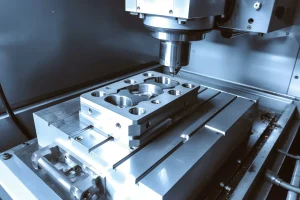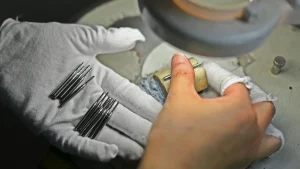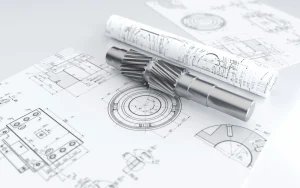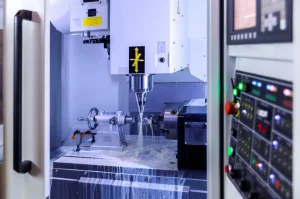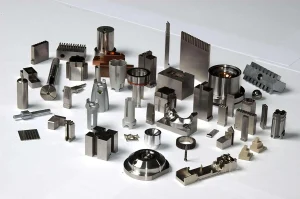1、Introduction to High-Speed Steel and Tungsten Steel
High-speed steel and tungsten steel are both crucial materials in the field of metalworking. 高速钢, also known as HSS, is a type of tool steel that contains elements like tungsten, 钼, chromium, vanadium, and cobalt. It is designed to maintain its hardness and cutting ability even at high temperatures, making it ideal for applications that involve high-speed cutting and machining of metals. Tungsten steel, 另一方面, is a type of alloy that contains a significant amount of tungsten. It is known for its extremely high hardness and wear resistance, which makes it suitable for use in cutting tools, 死了, and other applications where durability is essential.
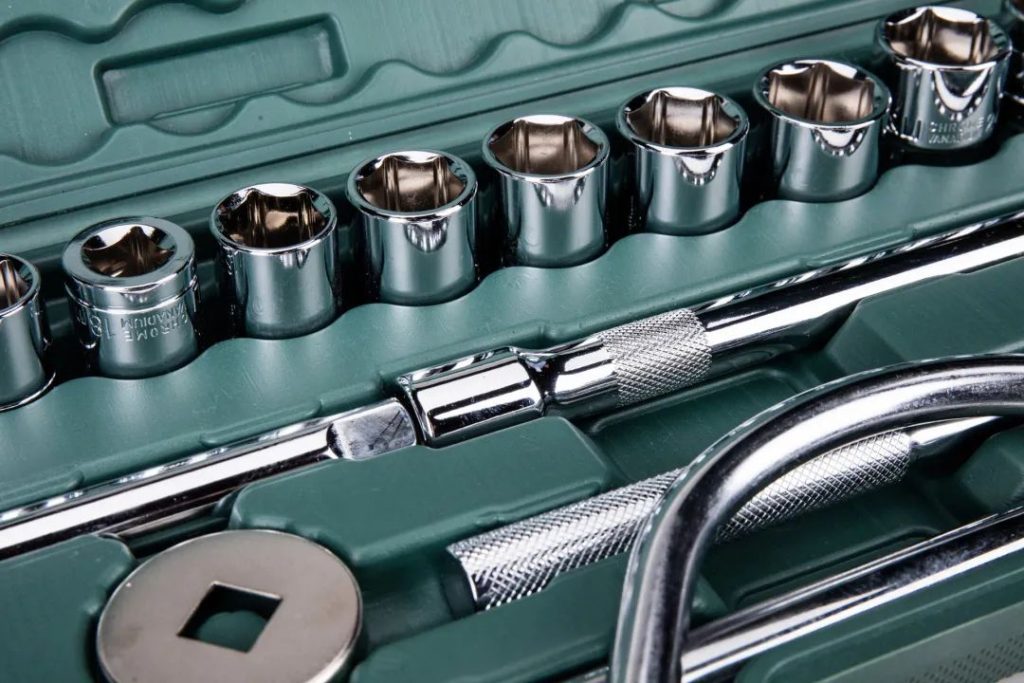
2、Composition Differences
High-speed steel typically contains a combination of tungsten, 钼, chromium, vanadium, and cobalt. The presence of tungsten and molybdenum helps to increase the hardness and heat resistance of the steel. Chromium enhances its corrosion resistance, while vanadium improves the wear resistance and toughness. Cobalt, 另一方面, can further increase the heat resistance and hardness of high-speed steel, allowing it to maintain its cutting performance at even higher temperatures.
Tungsten steel, as the name suggests, is primarily composed of tungsten. Tungsten has a very high melting point and is extremely hard, which gives tungsten steel its exceptional hardness and wear resistance. In addition to tungsten, it may also contain small amounts of other elements such as carbon, chromium, and cobalt. The carbon content in tungsten steel can affect its hardness and brittleness. Higher carbon content generally leads to increased hardness but also makes the steel more brittle. Chromium and cobalt can contribute to improving the overall properties of tungsten steel, such as enhancing its corrosion resistance and heat resistance.
3、Hardness and Wear Resistance Features
The hardness of high-speed steel typically ranges from HRC 60-65, depending on its specific composition and heat treatment. This hardness level allows it to cut through a variety of metals with relative ease. 然而, at elevated temperatures, the hardness of high-speed steel can decrease. 例如, when the temperature reaches around 500-600°C, the hardness may drop to around HRC 50-55. This is due to the changes in the microstructure of the steel, such as the transformation of martensite and the coarsening of carbides.
Tungsten steel, 另一方面, has a much higher hardness, usually ranging from HRA 89-92. It can maintain its hardness even at very high temperatures, up to 800-900°C or even higher in some cases. This is because tungsten forms very hard carbides in the alloy, which contribute to its excellent wear resistance. 在实际应用中, tungsten steel is often used in cutting tools for machining hard materials like titanium alloys and hardened steels. 例如, 在航空航天业, tungsten steel cutting tools are used to shape titanium components with high precision. They can withstand the high temperatures generated during the cutting process and maintain their sharpness and cutting performance for a long time. High-speed steel is more commonly used in applications where the cutting speeds are not extremely high and the temperature rise is relatively moderate, such as in general-purpose machining of carbon steels and some non-ferrous metals.
4、Heat Resistance Comparison
When it comes to heat resistance, tungsten steel outperforms high-speed steel. High-speed steel starts to lose its hardness and cutting efficiency when the temperature rises above 500-600°C. 如前所述, this is due to the microstructural changes that occur within the steel. 相比之下, tungsten steel can maintain its hardness and cutting ability even at temperatures as high as 800-900°C or more. This makes tungsten steel extremely valuable in applications where high temperatures are generated during machining, such as in the cutting of heat-resistant alloys or in high-speed machining processes that produce a significant amount of heat. 例如, in the manufacturing of gas turbine components, which are made from high-temperature alloys, tungsten steel cutting tools are often the preferred choice. They can withstand the extreme heat generated during the machining process and ensure the dimensional accuracy and surface finish of the components.
5、Applications in CNC Machining
在数控加工中, both high-speed steel and tungsten steel play significant roles. High-speed steel is often used in the production of drills, taps, and milling cutters for general-purpose machining. 例如, 在汽车行业, high-speed steel tools are used to machine engine components made of aluminum and cast iron. They can provide good cutting performance at relatively low speeds and are more cost-effective compared to tungsten steel tools.
Tungsten steel, due to its outstanding hardness and wear resistance, is widely used in high-precision and high-speed machining applications. 在电子行业, tungsten steel cutters are used to machine circuit boards and micro-components with extremely high precision. They can withstand the high temperatures generated during high-speed cutting and ensure the quality and accuracy of the finished products.
快速高效, 领先的CNC铝处理服务提供商, utilizes the unique properties of these steels to offer high-quality machining services. They understand the characteristics of high-speed steel and tungsten steel and select the appropriate materials based on the specific requirements of each project. 例如, when machining aluminum alloy parts with complex shapes and moderate precision requirements, Rapidefficient may choose high-speed steel tools to achieve efficient and cost-effective processing. 另一方面, for parts that demand high precision and excellent surface finish, such as those used in the aerospace and medical industries, tungsten steel tools are preferred. By leveraging the advantages of these materials, Rapidefficient can ensure the dimensional accuracy, 表面质量, and overall performance of the machined parts, meeting the diverse needs of customers.
6、Impact on Machining Efficiency
The characteristics of high-speed steel and tungsten steel have a significant impact on the overall efficiency of CNC machining processes.
高速钢, with its relatively lower hardness and heat resistance compared to tungsten steel, is more suitable for applications where the cutting speeds are moderate and the heat generated is not excessive. 在这种情况下, it can provide efficient cutting performance and has the advantage of being more cost-effective. 例如, in the production of a large number of standard parts with relatively simple shapes and moderate precision requirements, high-speed steel tools can complete the machining tasks quickly and economically. The relatively lower cost of high-speed steel tools also allows for more frequent replacement when they become worn, minimizing the impact on production efficiency due to tool changes.
另一方面, tungsten steel’s exceptional hardness and high heat resistance enable it to handle high-speed and high-precision machining operations. It can maintain its sharpness and cutting ability even under extreme conditions, resulting in better surface finishes and higher dimensional accuracy of the machined parts. In industries such as aerospace and electronics, where precision and quality are of utmost importance, tungsten steel tools are often the preferred choice. 例如, in the manufacturing of aircraft engine components or microelectronic chips, the use of tungsten steel tools can significantly reduce the need for secondary finishing operations, saving both time and cost in the long run.
快速高效, a renowned CNC aluminum processing service provider, recognizes the importance of choosing the right steel for different machining tasks. By carefully selecting between high-speed steel and tungsten steel based on the specific requirements of each project, Rapidefficient is able to optimize the machining process and improve overall efficiency. Their experienced team of engineers and technicians can accurately assess the characteristics of the materials to be machined and determine the most suitable tooling and machining parameters. This not only ensures the high quality of the finished products but also helps to minimize production time and costs, giving customers a competitive edge in the market.
7、成本考虑
The cost of high-speed steel and tungsten steel can vary significantly, which is an important factor to consider when choosing between the two materials.
High-speed steel is generally more affordable compared to tungsten steel. The production process of high-speed steel is relatively mature and widely available, which contributes to its lower cost. It is a cost-effective option for applications where the performance requirements are not extremely high and budget constraints are a concern. 例如, in small-scale manufacturing or hobbyist projects, high-speed steel tools can provide satisfactory results at a lower price point.
Tungsten steel, 另一方面, is more expensive due to the high cost of tungsten and the more complex manufacturing processes involved. The extraction and purification of tungsten are relatively difficult, which drives up the price of the raw material. 此外, the production of tungsten steel requires precise control of alloy composition and heat treatment to achieve its excellent properties, further increasing the cost. 然而, despite its higher cost, tungsten steel is often a worthwhile investment in applications where its unique properties, such as high hardness and heat resistance, are essential. 例如, in the production of high-value-added products in the aerospace or medical industries, the use of tungsten steel can ensure the quality and performance of the final products, justifying the higher cost.
8、How to Choose the Right Steel for Your Project
When selecting the appropriate steel for a project, several factors need to be considered. 首先, the nature of the machining operation is crucial. If it involves high-speed cutting with significant heat generation and requires high precision and excellent wear resistance, tungsten steel would be a more suitable choice. 例如, in the production of surgical instruments where fine details and durability are essential, tungsten steel can ensure the sharpness and longevity of the cutting edges. 另一方面, if the machining task is more general-purpose, with moderate cutting speeds and cost-effectiveness is a priority, high-speed steel can be considered. Such as in the manufacturing of furniture parts, where the complexity of shapes may vary, but the overall performance requirements are not as extreme as in some high-tech industries.
第二, the type of material being machined also plays a role. For softer materials like aluminum or some plastics, high-speed steel can often provide satisfactory results. 然而, for hard materials like titanium alloys or hardened steels, tungsten steel’s superior hardness and wear resistance are necessary to achieve efficient and accurate machining. 例如, when machining titanium components for aerospace applications, tungsten steel tools are able to handle the high strength and heat resistance of the material.
Budget is another significant factor. High-speed steel is generally more budget-friendly, making it a viable option for projects with limited financial resources or large production runs where tool replacement costs need to be minimized. 相比之下, tungsten steel’s higher cost is justified in projects where its unique properties are indispensable for achieving the desired quality and performance, such as in the production of high-end automotive engine parts or critical components in the semiconductor industry.
最后, the specific requirements of the project in terms of dimensional accuracy and surface finish should be taken into account. If extremely tight tolerances and a mirror-like surface finish are required, tungsten steel is more likely to meet these demands. But for projects where a slightly lower level of precision is acceptable, high-speed steel can be a practical alternative.
9、Rapidefficiency在数控加工市场中的价值
Rapidefficient holds significant value in the CNC machining market. Their expertise in handling high-speed steel and tungsten steel enables them to offer precise and efficient machining services. By choosing the appropriate material for each project, Rapidefficient ensures the production of high-quality parts with excellent dimensional accuracy and surface finish. Their commitment to innovation and technology adoption allows them to stay ahead in the competitive market, providing customers with reliable and cost-effective solutions. Whether it’s for the automotive, 航天, 电子产品, 或其他行业, Rapidefficient’s proficiency in working with these steels makes them a preferred choice for CNC aluminum processing, contributing to the success of various manufacturing endeavors.
10、Conclusion and Recommendations
综上所述, high-speed steel and tungsten steel have distinct characteristics that make them suitable for different applications in CNC machining. High-speed steel is more cost-effective and suitable for general-purpose machining, while tungsten steel offers superior hardness and heat resistance for high-precision and high-speed operations. When choosing between the two, it is essential to consider factors such as the machining operation, the material being machined, 预算, and specific project requirements.
快速高效, as a leading CNC aluminum processing service provider, offers valuable expertise in utilizing these materials. Their ability to select the appropriate steel for each project ensures high-quality results and efficient production processes. For those in need of CNC aluminum processing services, Rapidefficient is a reliable choice that can meet diverse manufacturing needs and deliver excellent outcomes.

